Ilse Hirsch, born in 1922 in Hamm, was a Nazi resistance fighter who played a key role in the assassination of Franz Oppenhof the mayor of Aachen in the later days of World War Two.
Born in 1922, Ilse Hirsch  joined the League of German Girl s
joined the League of German Girl s  , part of the Hitler Youth movement
, part of the Hitler Youth movement  , when she was 16 years old and became one of the organisation’s leaders. In 1945 she became involved with the Nazi resistance force, dubbed ’The Werewolves’
, when she was 16 years old and became one of the organisation’s leaders. In 1945 she became involved with the Nazi resistance force, dubbed ’The Werewolves’  , whose mission was to work behind enemy lines as the Allies advanced into Germany.
, whose mission was to work behind enemy lines as the Allies advanced into Germany. 
In a whirlwind recruiting campaign he collected almost 5,000 young militants by year’s end and established a clandestine training complex in medieval Hülchrath Castle,  some 45 miles northeast of Aachen. The surrounding village was not only isolated, but also conveniently near the Western Front, where the battered Allies were soon embroiled in the Battle of the Bulge and unlikely to launch any major offensives before spring. Just after Christmas, Prützmann and his officers code-named the Aachen mission Operation Carnival and began selecting a team. Chosen to command the squad was 30-something SS-Untersturmführer Herbert Wenzel,
some 45 miles northeast of Aachen. The surrounding village was not only isolated, but also conveniently near the Western Front, where the battered Allies were soon embroiled in the Battle of the Bulge and unlikely to launch any major offensives before spring. Just after Christmas, Prützmann and his officers code-named the Aachen mission Operation Carnival and began selecting a team. Chosen to command the squad was 30-something SS-Untersturmführer Herbert Wenzel,
Hirsch was selected to take part in Operation Carnival 
 , a mission to assassinate Dr. Franz Oppenhoff
, a mission to assassinate Dr. Franz Oppenhoff  , who had recently been appointed mayor of Aachen by the Americans who had taken control of the city.
, who had recently been appointed mayor of Aachen by the Americans who had taken control of the city.
Oppenhoff was considered a traitor and a collaborationist by the Nazi regime, and his assassination, code named Unternehmen Karneval (“Operation Carnival”), was ordered by Heinrich Himmler,  planned by SS Obergruppenführer Hans Adolf Prutzmann
planned by SS Obergruppenführer Hans Adolf Prutzmann 

 , and carried out by an assassination unit composed of four SS men and two members of the Hitler Youth.
, and carried out by an assassination unit composed of four SS men and two members of the Hitler Youth.
Hirsch knew the ground well and acted as a guide for the team. Along with 5 other Werewolves she was parachuted in near Aachen and guided them to Oppenhoff’s countryside home outside the city. Oppenhoff was shot by SS-Unterscharführer Joseph Leitgeb from Innsbruck, on the steps of his home  , after which Hirsch attempted to lead the Werewolves to safety. However she caught her foot on a trip-wire and triggered a landmine, gravely injuring her and killing Leitgeb.
, after which Hirsch attempted to lead the Werewolves to safety. However she caught her foot on a trip-wire and triggered a landmine, gravely injuring her and killing Leitgeb.
Hirch’s  injuries kept her in hospital for a long time but she eventually returned home. In 1949 the surviving members of the team, barring one, were arrested and became the subject of Aachen ‘Werewolf Trial’.
injuries kept her in hospital for a long time but she eventually returned home. In 1949 the surviving members of the team, barring one, were arrested and became the subject of Aachen ‘Werewolf Trial’.  All were found guilty and sentenced to 1-4 years in prison, but Hirsch was released. Following the war Hirsch continued to live in the Aachen area, marrying and having two sons.
All were found guilty and sentenced to 1-4 years in prison, but Hirsch was released. Following the war Hirsch continued to live in the Aachen area, marrying and having two sons.
Franz Oppenhoff is buried with his wife Irmgard, born Nimax, who died age 92 in 2001, on the Hauptfriedhof of Aachen.






 and advanced westward as much as 40 kilometres (25 miles) a day through East Prussia, Lower Silesia , East Pomeria, and Upper Silesia, temporarily halting on a line 60 km (37 mi) east of Berlin along the Oder River. When the offensive resumed, two Soviet fronts, army groups attacked Berlin from the east and south, while a third overran German forces positioned north of Berlin. The battle within the city lasted from 20 April until the morning of 2 May.
and advanced westward as much as 40 kilometres (25 miles) a day through East Prussia, Lower Silesia , East Pomeria, and Upper Silesia, temporarily halting on a line 60 km (37 mi) east of Berlin along the Oder River. When the offensive resumed, two Soviet fronts, army groups attacked Berlin from the east and south, while a third overran German forces positioned north of Berlin. The battle within the city lasted from 20 April until the morning of 2 May.
 and 95,383 motor vehicles, many manufactured in the US
and 95,383 motor vehicles, many manufactured in the US correctly anticipated that the main Soviet thrust would be made over the Oder River. Before the main battle in Berlin commenced, the Soviets managed to encircle the city as a result of their success in the battles of the Seelow Heights and Halbe.
correctly anticipated that the main Soviet thrust would be made over the Oder River. Before the main battle in Berlin commenced, the Soviets managed to encircle the city as a result of their success in the battles of the Seelow Heights and Halbe. 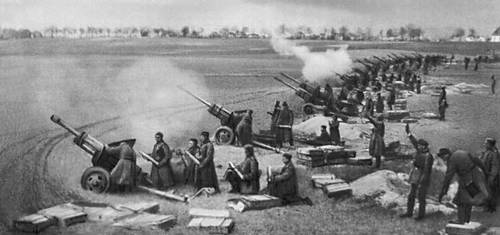 During 20 April 1945, the 1st Belorussian Front led by Marshal
During 20 April 1945, the 1st Belorussian Front led by Marshal  started shelling Berlin’s city centre, while Marshal Ivan Konev’s 1st Ukrainian Front had pushed from the south through the last formations of Army Group Centre under Generalfeldmarschall der Gebirgstruppe,
started shelling Berlin’s city centre, while Marshal Ivan Konev’s 1st Ukrainian Front had pushed from the south through the last formations of Army Group Centre under Generalfeldmarschall der Gebirgstruppe,  The German defences, roughly 45,000 soldiers, were mainly led by Helmuth Weidling
The German defences, roughly 45,000 soldiers, were mainly led by Helmuth Weidling  and consisted of several depleted, badly equipped, and disorganised Wehrmacht and Waffen SS
and consisted of several depleted, badly equipped, and disorganised Wehrmacht and Waffen SS  divisions, the latter of which included many SS foreign volunteers, many French, Dutch, Belgium, as well as poorly trained Volkssturm and Hitler Youth members. Within the next few days, the Soviets rapidly advanced through the city and reached the city centre where close-quarters combat raged. Helmuth Weidling died in captivity on 17-11-1955, age 64 in Russia.
divisions, the latter of which included many SS foreign volunteers, many French, Dutch, Belgium, as well as poorly trained Volkssturm and Hitler Youth members. Within the next few days, the Soviets rapidly advanced through the city and reached the city centre where close-quarters combat raged. Helmuth Weidling died in captivity on 17-11-1955, age 64 in Russia.
 Soviet forces sustained 81,116 dead for the entire operation, which included the battles of Seelow Heights and the Halbe; another 280,251 were reported wounded or sick during the operational period.[123][h] The operation also cost the Soviets about 1,997 tanks and SPGs. Krivosheev noted: “All losses of arms and equipment are counted as irrecoverable losses, i.e. beyond economic repair or no longer serviceable”. Soviet estimates based on kill claims placed German losses at 458,080 killed and 479,298 captured, but German research puts the number of dead at approximately 92,000 – 100,000. The number of civilian casualties is unknown, but 125,000 are estimated to have perished during the entire operation
Soviet forces sustained 81,116 dead for the entire operation, which included the battles of Seelow Heights and the Halbe; another 280,251 were reported wounded or sick during the operational period.[123][h] The operation also cost the Soviets about 1,997 tanks and SPGs. Krivosheev noted: “All losses of arms and equipment are counted as irrecoverable losses, i.e. beyond economic repair or no longer serviceable”. Soviet estimates based on kill claims placed German losses at 458,080 killed and 479,298 captured, but German research puts the number of dead at approximately 92,000 – 100,000. The number of civilian casualties is unknown, but 125,000 are estimated to have perished during the entire operation

 , the former Pension Moritz
, the former Pension Moritz  where Hitler had stayed in 1922–23. By 1926, the family running the Pension had left and Hitler did not like the new owner. He moved first to the Marineheim and then to a hotel in Berchtesgaden, the Deutsches Haus, where he dictated the second volume of Mein Kampf in the summer of 1926. Hitler met his alleged lover
where Hitler had stayed in 1922–23. By 1926, the family running the Pension had left and Hitler did not like the new owner. He moved first to the Marineheim and then to a hotel in Berchtesgaden, the Deutsches Haus, where he dictated the second volume of Mein Kampf in the summer of 1926. Hitler met his alleged lover  who worked in a shop on the ground floor of the hotel, during another visit in autumn 1926. In 1928, Winter’s widow rented Haus Wachenfeld to Hitler and his half-sister Angela
who worked in a shop on the ground floor of the hotel, during another visit in autumn 1926. In 1928, Winter’s widow rented Haus Wachenfeld to Hitler and his half-sister Angela  came to live there as housekeeper, although she left soon after her daughter
came to live there as housekeeper, although she left soon after her daughter  1931 death in Hitler’s Munich apartment
1931 death in Hitler’s Munich apartment
 who was living at the Platterhof Hotel. Hitler traveled there under the name of “Herr Wolf” and held meetings with supporters in local guesthouses.
who was living at the Platterhof Hotel. Hitler traveled there under the name of “Herr Wolf” and held meetings with supporters in local guesthouses.


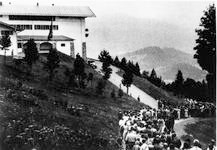
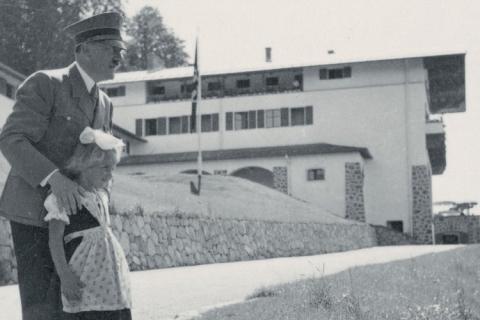
 Hitler’s official photographer, took lots of photos of these scenes.
Hitler’s official photographer, took lots of photos of these scenes.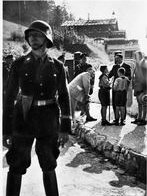

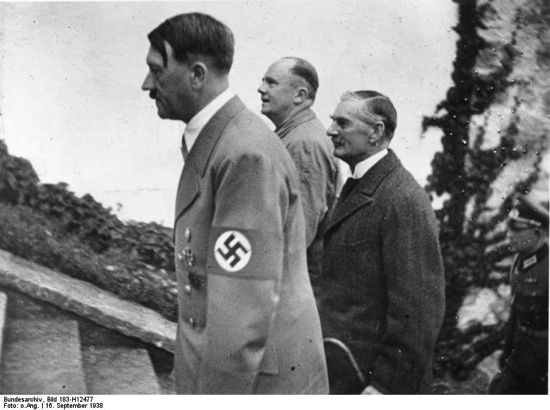
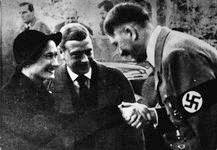
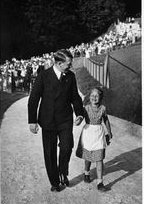
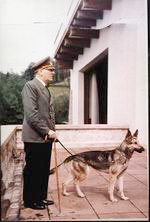
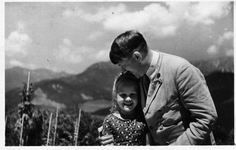
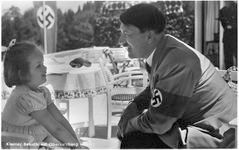

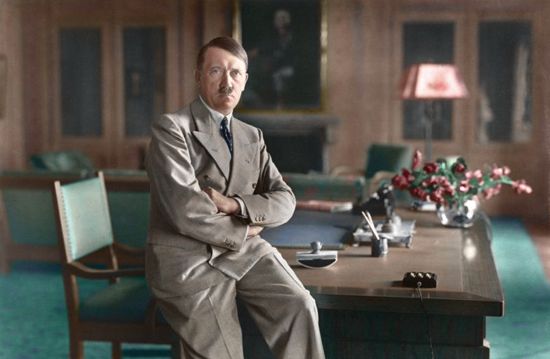
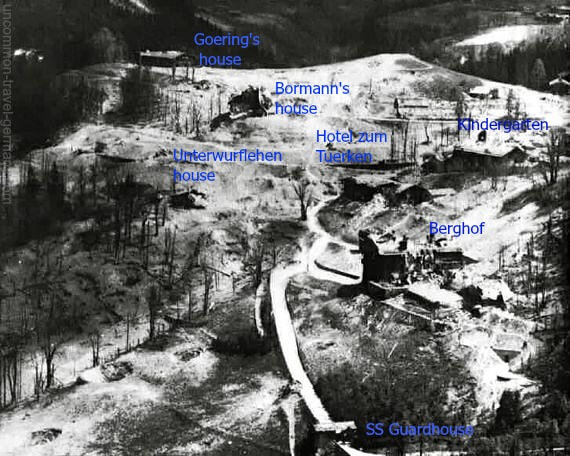

 his first love, the thirty-seven-year-old Adolf became infatuated with Mitzi, a sixteen-year-old Munich shop girl. He proposed marriage but said his “duty and mission” consumed him and she would have to wait for him.She tried to hang herself in 1928 in Berchtesgaden with a clothesline as Hitler ended the relation suspected from sex with an underage girl, She had another tryst with Hitler in 1931, about which she said, “I let everything happen. I had never been so happy as I was that night”. He asked her to be his mistress and replace Eva Braun, but she insisted on marriage and the two parted.
his first love, the thirty-seven-year-old Adolf became infatuated with Mitzi, a sixteen-year-old Munich shop girl. He proposed marriage but said his “duty and mission” consumed him and she would have to wait for him.She tried to hang herself in 1928 in Berchtesgaden with a clothesline as Hitler ended the relation suspected from sex with an underage girl, She had another tryst with Hitler in 1931, about which she said, “I let everything happen. I had never been so happy as I was that night”. He asked her to be his mistress and replace Eva Braun, but she insisted on marriage and the two parted. Hitler’s nice, in 1931 begged her possessive uncle to allow her to leave Munich and go to Vienna to study, and they had a terrible row. Hitler left Munich and she shot herself with Hitler’s Walter PPK 7.65 pistol in his study.
Hitler’s nice, in 1931 begged her possessive uncle to allow her to leave Munich and go to Vienna to study, and they had a terrible row. Hitler left Munich and she shot herself with Hitler’s Walter PPK 7.65 pistol in his study. tried twice to suicide in 1932 and 1935 before succeeding in 1945, Lonely and disappointed of the endless waiting, Eva Braun first attempted suicide on 01-02-1932 at the age of 20 by shooting herself in the neck with her father’s pistol. The bullet almost hit her artery, but she recovered. She even could make a phonecall directly after and was zo smart to call Dr. Wilhelm Plate, a brother in law of
tried twice to suicide in 1932 and 1935 before succeeding in 1945, Lonely and disappointed of the endless waiting, Eva Braun first attempted suicide on 01-02-1932 at the age of 20 by shooting herself in the neck with her father’s pistol. The bullet almost hit her artery, but she recovered. She even could make a phonecall directly after and was zo smart to call Dr. Wilhelm Plate, a brother in law of 
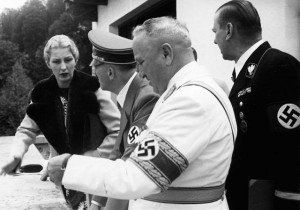
 a dancer, actress and socialite and the wife of volatile alcoholic Robert Ley, the director of the Strength Though Joy Program.KDF. Inga was said to be infatuated with Hitler for a time. One evening, she escaped from her domineering husband and appeared at Hitler’s door. Whether the two became lovers is unknown, but she eventually returned to her husband. Later in her life she survived a difficult childbirth, but seems to have been saddled with a consuming depression and took her own life with a pistol in 1942.
a dancer, actress and socialite and the wife of volatile alcoholic Robert Ley, the director of the Strength Though Joy Program.KDF. Inga was said to be infatuated with Hitler for a time. One evening, she escaped from her domineering husband and appeared at Hitler’s door. Whether the two became lovers is unknown, but she eventually returned to her husband. Later in her life she survived a difficult childbirth, but seems to have been saddled with a consuming depression and took her own life with a pistol in 1942. , a siren of German films, held Hitler’s fascination for a time. He said she was the epitome of the blond-haired, blue-eyed Aryan. Friends said she didn’t return the man’s affections. Hitler pressured her to make propaganda films. Nazi Propaganda Minister
, a siren of German films, held Hitler’s fascination for a time. He said she was the epitome of the blond-haired, blue-eyed Aryan. Friends said she didn’t return the man’s affections. Hitler pressured her to make propaganda films. Nazi Propaganda Minister  sister of Hitler favorite
sister of Hitler favorite  was the daughter of William Dodd, the American Ambassador to Germany. She may have had the most bizarre life story of any of Hitler’s possible lovers. While living in Berlin, she became infatuated with Hitler and the Nazi Party. One of her lovers,
was the daughter of William Dodd, the American Ambassador to Germany. She may have had the most bizarre life story of any of Hitler’s possible lovers. While living in Berlin, she became infatuated with Hitler and the Nazi Party. One of her lovers, 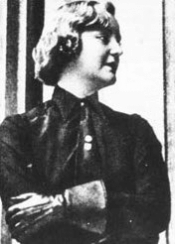
 and his Black Shirts, spent ten months stalking Adolf Hitler in Munich. Hitler, always of predictable habits, frequented the Osteria Bavaria Café. attempted suicide in 1939. In 1939, when war with Britain was declared, Unity went to the Englisher Garden, Munich’s huge urban park, and shot herself in the head with a pearl-handled pistol given to her by Hitler for her protection. She survived the suicide attempt and it was not until 1948 that she died in the UK from complications caused by the bullet still lodged in her skull.
and his Black Shirts, spent ten months stalking Adolf Hitler in Munich. Hitler, always of predictable habits, frequented the Osteria Bavaria Café. attempted suicide in 1939. In 1939, when war with Britain was declared, Unity went to the Englisher Garden, Munich’s huge urban park, and shot herself in the head with a pearl-handled pistol given to her by Hitler for her protection. She survived the suicide attempt and it was not until 1948 that she died in the UK from complications caused by the bullet still lodged in her skull.

 Use of the term “ace” to describe these pilots began in World War I, when French newspapers described Adolphe Pégoud, as l’As (French for “Ace”) after he became the first pilot to down five German aircraft, being awarded the Croix de guerre. The British initially used the term “star-turns” (a show business term), while the Germans described their elite fighter pilots asÜberkanonen(which roughly translates to “top guns”).
Use of the term “ace” to describe these pilots began in World War I, when French newspapers described Adolphe Pégoud, as l’As (French for “Ace”) after he became the first pilot to down five German aircraft, being awarded the Croix de guerre. The British initially used the term “star-turns” (a show business term), while the Germans described their elite fighter pilots asÜberkanonen(which roughly translates to “top guns”). 15 victories and Oswald Boelcke
15 victories and Oswald Boelcke  40 victories,were much publicised for the benefit of civilian morale, and the Pour le Mérite, Prussia’s highest award for gallantry, became part of the uniform of a leading German ace. In the Luftstreitkräfte the Pour le Mérite was nicknamed Der blaue Max/The Blue Max,
40 victories,were much publicised for the benefit of civilian morale, and the Pour le Mérite, Prussia’s highest award for gallantry, became part of the uniform of a leading German ace. In the Luftstreitkräfte the Pour le Mérite was nicknamed Der blaue Max/The Blue Max,  after Max Immelmann, who was the first fighter pilot to receive this award. Initially, German aviators had to destroy eight Allied aircraft to receive this medal.[4] As the war progressed, the qualifications for Pour le Mérite were raised, but successful German fighter pilots continued to be hailed as national heroes for the remainder of the war.
after Max Immelmann, who was the first fighter pilot to receive this award. Initially, German aviators had to destroy eight Allied aircraft to receive this medal.[4] As the war progressed, the qualifications for Pour le Mérite were raised, but successful German fighter pilots continued to be hailed as national heroes for the remainder of the war.  received the Blue Max.
received the Blue Max. was an American fighter ace in World War I and Medal of Honor recipient, with 26 aerial victories. Albert Ball, Britain’s
was an American fighter ace in World War I and Medal of Honor recipient, with 26 aerial victories. Albert Ball, Britain’s first famous flying ace. He was killed in 1917, aged 20. Soviet VVS 1st. Lt. Ivan Kozhedub,
first famous flying ace. He was killed in 1917, aged 20. Soviet VVS 1st. Lt. Ivan Kozhedub, 62 victories, the top Allied World War II Ace of Aces with 62 victories over Axis aircraft. German Major Erich Hartmann
62 victories, the top Allied World War II Ace of Aces with 62 victories over Axis aircraft. German Major Erich Hartmann  nicknamed “Bubi” (“The Kid”) by his comrades and the “Black Devil” by the Soviets, was a German fighter pilot during World War II and the most successful fighter ace in the history of aerial warfare with 352 kills. Russian Lydia Litvyak,
nicknamed “Bubi” (“The Kid”) by his comrades and the “Black Devil” by the Soviets, was a German fighter pilot during World War II and the most successful fighter ace in the history of aerial warfare with 352 kills. Russian Lydia Litvyak,  12 victories, of the Soviet Air Force, one of only two female flying aces in history.
12 victories, of the Soviet Air Force, one of only two female flying aces in history. (about 87 kills) could be the early technical dominance of the Mitsubishi A6M “Zero” fighter.
(about 87 kills) could be the early technical dominance of the Mitsubishi A6M “Zero” fighter. on 31 August 1915, age 26, was shot down and killed by one of his pre-war German students, Unteroffizier Otto Kandulski. Max Immelmann was shot down on 18 June 1916, aged 25, in Sallaumines. Oswald Boelcke was killed in a crash following a midair collision on 28 October 1916, age 25. Hermann Goering committed suicide in the prison of the Nurnburg court house on 15-10-1946, age 53. Eddie Rickenbacker survived the war and died July 23 1973, aged 82, in Zürich, Switzerland. Albert Ball crashed to his death in a field in France on 7 May, 1917, age 20, over Annœullin, France. Ivan Kozhedub, survived the war and died 8 August 1991, aged 71, in moscow, Russian SFSR, Soviet Union. Bubi Hartmann was sentenced to 25 years of hard labour and spent 10 years in various Soviet prison camps and gulags until he was released in 1955. He died on 20 September 1993 aged 71 in Weil im Schönbuch, Germany. Russian Lydia Litvyak was shot down near Orel during the Battle of Kursk as she attacked a formation of German aeroplanes on 1 August 1943, aged 21, Krasnyi Luch,.
on 31 August 1915, age 26, was shot down and killed by one of his pre-war German students, Unteroffizier Otto Kandulski. Max Immelmann was shot down on 18 June 1916, aged 25, in Sallaumines. Oswald Boelcke was killed in a crash following a midair collision on 28 October 1916, age 25. Hermann Goering committed suicide in the prison of the Nurnburg court house on 15-10-1946, age 53. Eddie Rickenbacker survived the war and died July 23 1973, aged 82, in Zürich, Switzerland. Albert Ball crashed to his death in a field in France on 7 May, 1917, age 20, over Annœullin, France. Ivan Kozhedub, survived the war and died 8 August 1991, aged 71, in moscow, Russian SFSR, Soviet Union. Bubi Hartmann was sentenced to 25 years of hard labour and spent 10 years in various Soviet prison camps and gulags until he was released in 1955. He died on 20 September 1993 aged 71 in Weil im Schönbuch, Germany. Russian Lydia Litvyak was shot down near Orel during the Battle of Kursk as she attacked a formation of German aeroplanes on 1 August 1943, aged 21, Krasnyi Luch,.